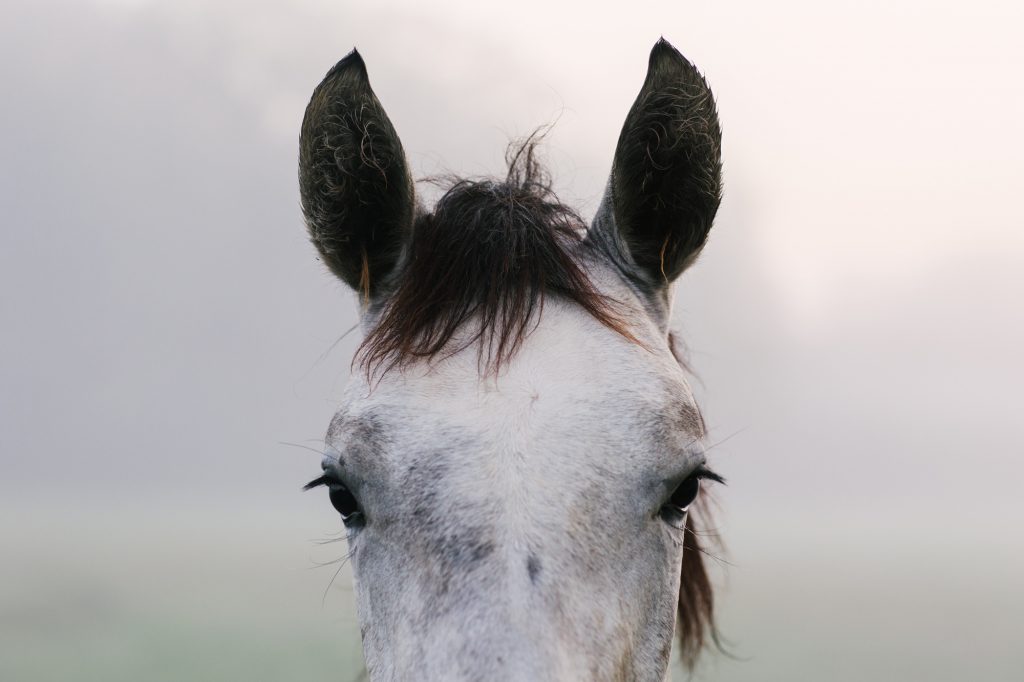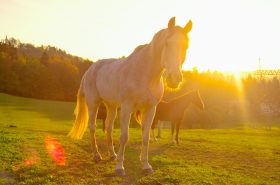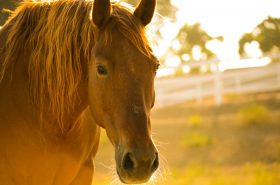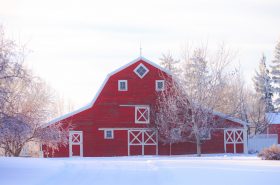My 21 year old gelding is blind in his right eye.
He wasn’t always blind. When he was a month old a piece of his mom’s tail got stuck in his eye. It was removed and his eye healed just fine. He always had a white dot in that eye. Over time that dot became a small starburst, then a larger starburst. About three years ago it was a full cataract. His limited vision does not bother him. When riding his vision is not an issue at all. When out hacking he will always be looking behind him with his good eye.
Below are some fun facts that I’ve recently learned about equine vision.
Horses are not color blind. Objects with colors that contrast with the ground are easier for them to see. Horses can see colors in the blue-green spectrum. It is thought they cannot distinguish reds and yellows but research shows reds look more greenish to horses.

Horses have amazing night vision. Horses have a really cool membrane in their eye called a tapetum lucid. This is a reflecting membrane that increases the light to the photoreceptors. Their large eye is helpful in the detection of predators. Horses are less able to adjust to changes in light such as when it’s dark outside and I turn on the barn lights at night.
Individual horses are just like us in that about 30% of domestic horses are nearsighted. And about 40% of domestic horses are farsighted. These differences can affect how well a horse does at a particular activity.
Horses have almost a 350 degree range of vision. It stretches from the end of their nose to their hip on both sides. They have two blind spots. One blind spot is directly behind the horse. The second blind spot is directly in front of their face. It starts at eye level and goes to the ground below their nose out to about six feet. Horses cannot see the hay they eat or treat you hold up to their mouth. They use their whiskers to sense any object in this blind spot. That’s why it’s so important to not clip their whiskers!
The iris of the horse’s eye is usually dark brown or black but can be found in shades of hazel, amber, blue, and green. The most common eye color is brown and green is the rarest eye color. Eyes can also be multi-colored.
The last fun fact is horse eyes are big. Their eyes are twice the size of human eyes. Horse’s eyes one of the largest eyes in the animal kingdom!



